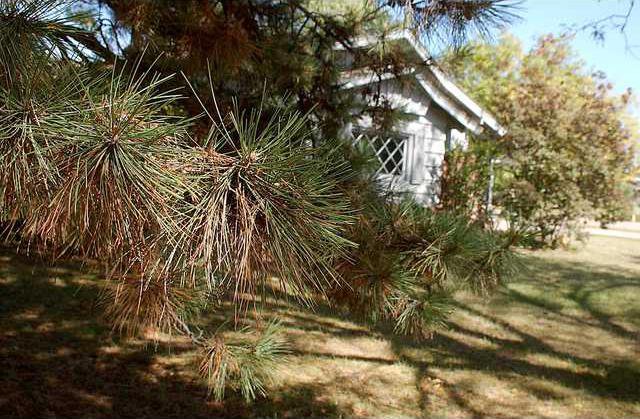(EDITOR’S NOTE: This is one in a series of articles on the continuing spread of pine wilt disease.)
When Kansas Forest Service District Forester Jim Strine met with the Great Bend City Council in June of 2010, he reported that Great Bend was as far west as a killer pine tree disease had been transmitted.
But Monday when he met with the Barton County Commission, he explained that it has moved on to Rush, Ellis, Rooks and Phillips counties, and it continues to spread.
That is, in part, because there is no cure for the disease. It can only be slowed by the proper disposal of the affected trees.
But it’s also because there are so many susceptible trees in this state.
Pine wilt attacks introduced pine species. Native pines are resistant. But 95 percent of Kansas pines are introduced, the forester reported. That means almost all of our state’s pines will eventually succumb.
The only answer is to appropriately destroy affected trees and to replace them with native pines that won’t be affected by the disease.
According to information from the Kansas Department of Agriculture, the disease is devastating to the introduced species.
“Symptoms of pine wilt begin to occur in mid-summer and continue into early winter in Kansas.
“During feeding by the adult pine sawyer (a type of beetle) after emergence in late April and May, the nematodes leave the respiratory system of the beetle and enter the wound tissue.
“There the nematodes transform into adults and invade the sapwood primarily feeding on resin canals.
“The nematodes reproduce rapidly with each generation taking only five to six days to complete.
“In four to six weeks following feeding, the nematode is systemic through the tree and symptoms begin to develop.”
The affects of this disease are easy to spot, according to the information from the agriculture department.
“At first the infected tree begins to wilt and needles turn a dull green.
“If conditions are hot and dry, the tree rapidly dies with needles turning brown and no resin flow. Some trees die slowly up to three months of infection if conditions are not stressful. Pine sawyers continue to emerge from infected wood through the summer months, resulting in new infection of nearby trees over the summer and into the fall.
“Overall, symptoms include flagging of branches, wilting of needles, absence of resin in branches, and rapid death of the tree.”
Pine species that are at risk, commonly found in Kansas, include the Scots, Austrian, Japanese Black, white pine, and loblolly pines. “Scots and Japanese Black pines are considered highly susceptible to the nematode,” according to the department of agriculture.
Kansas still at risk
Pine wilt keeps moving west





